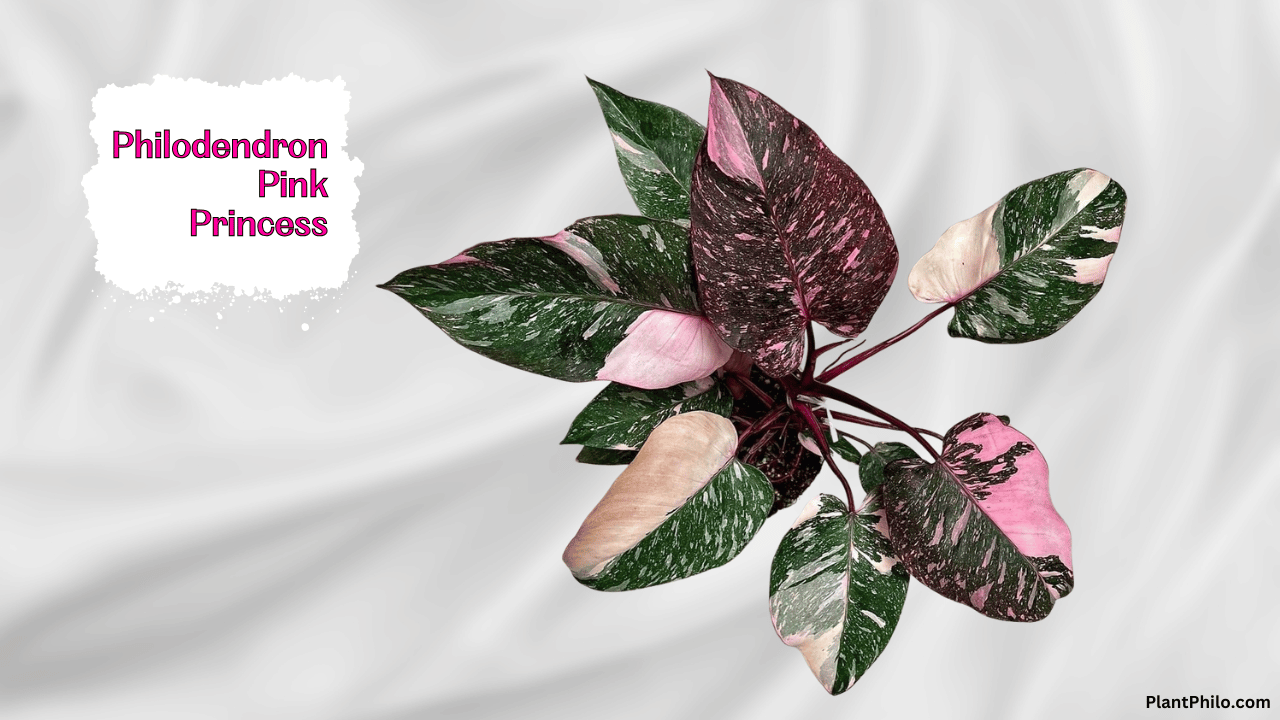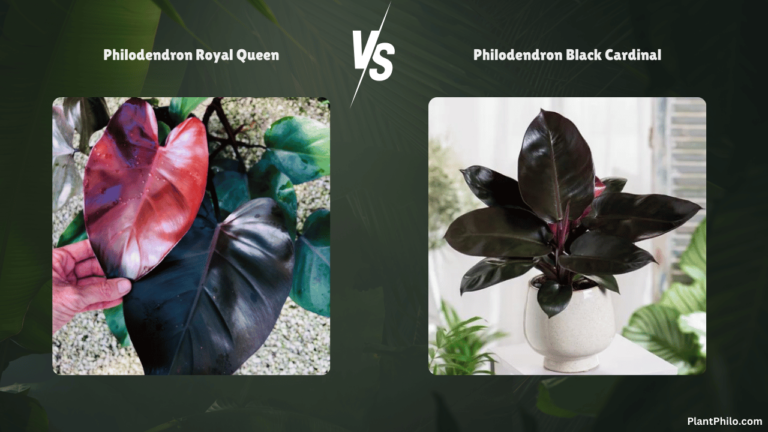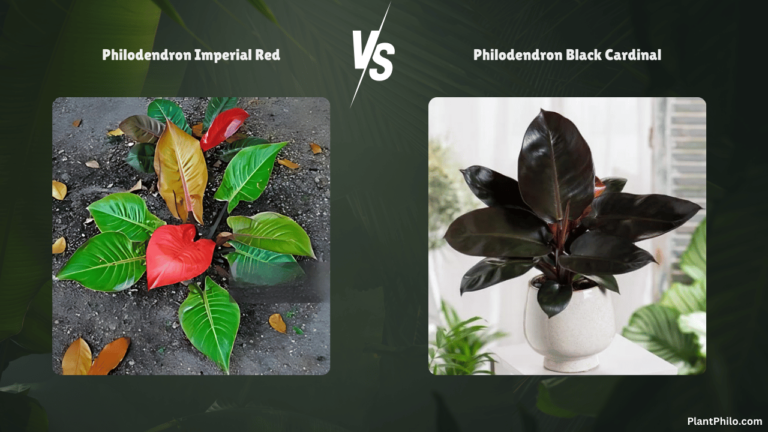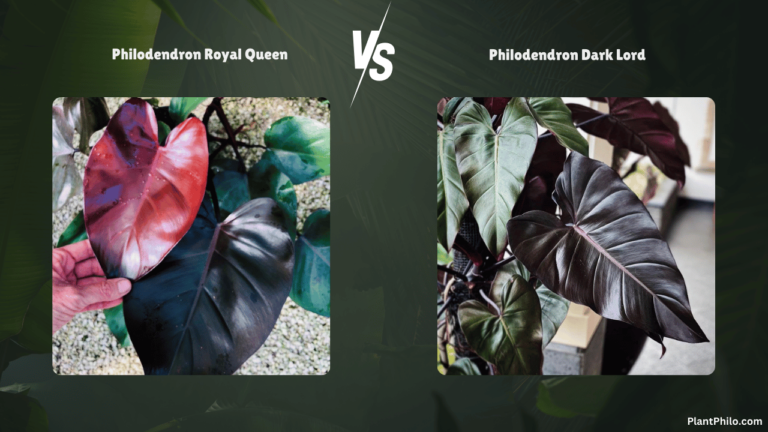Philodendron Pink Princess: Expert care tips to propagation techniques
Did you know that the Philodendron Pink Princess can take up to two years to develop its signature pink variegation? This stunning tropical plant, with its heart-shaped leaves adorned with splashes of bubblegum pink, has captured the hearts of plant enthusiasts worldwide. But behind its royal appearance lies a fascinating world of botanical wonder and horticultural challenges.
The Philodendron Pink Princess, scientifically known as Philodendron erubescens ‘Pink Princess’, is more than just a pretty face in the world of houseplants. It’s a testament to the marvels of plant genetics and the patience required in cultivating nature’s most prized specimens.
As we embark on this green-thumbed journey, we’ll unravel the mysteries of this coveted plant, from its origins in the lush Colombian rainforests to its place of honor on the wishlists of plant collectors across the globe.
Whether you’re a seasoned plant parent or a curious newcomer to the world of rare houseplants, this guide will equip you with the knowledge to not only grow but truly thrive with your very own Philodendron Pink Princess. So, let’s roll up our sleeves and dig into the royal treatment this plant deserves!
Information Table: Philodendron Pink Princess
| Feature | Details |
| Scientific Name | Philodendron erubescens ‘Pink Princess’ |
| Origin | Hybrid Cultivar |
| Growth Habit | Climbing/Vining |
| Leaf Shape | Heart-shaped |
| Leaf Color | Dark green with varying degrees of pink variegation |
| Light Needs | Bright, indirect light |
| Water Needs | Allow soil to dry out slightly between waterings |
| Humidity | High humidity (60-80%) |
| Soil | Well-draining, airy mix rich in organic matter |
| Fertilizer | Balanced liquid fertilizer during the growing season |
| Propagation | Stem cuttings |
| Pests & Diseases | Susceptible to common houseplant pests and root rot if overwatered |
| Toxicity | Toxic to pets and humans if ingested |
Origins and Botanical Background
The Philodendron Pink Princess may seem like a modern marvel, but its roots stretch back millions of years. The genus Philodendron, which translates to “tree lover” in Greek, is one of the largest genera of flowering plants, boasting over 500 species. These plants have been climbing trees and adorning forest floors since the Cretaceous period, roughly 66 million years ago.
Our Pink Princess, however, is a more recent addition to this ancient family. It’s a cultivar of Philodendron erubescens, a species native to the tropical rainforests of Colombia. In its natural habitat, P. erubescens can be found climbing up trees, its aerial roots clinging to bark as it reaches for dappled sunlight filtering through the canopy.
The ‘Pink Princess’ cultivar was developed through selective breeding in the 1970s, although its exact origins are somewhat shrouded in mystery. Plant breeders noticed a naturally occurring mutation that caused some leaves to produce pink variegation. Through careful cultivation and propagation of these mutated plants, they were able to stabilize the pink coloration, giving birth to the Philodendron Pink Princess we know and love today.
It’s important to note that while the Pink Princess is a cultivated variety, it still retains many of the characteristics of its wild ancestors. This includes its growth habits, care requirements, and even some of its more finicky tendencies – all of which we’ll explore in depth.
Botanical Characteristics of Philodendron Pink Princess
At first glance, the Philodendron Pink Princess is a sight to behold. Its leaves are typically heart-shaped (cordate) and can grow up to 8-10 inches (20-25 cm) in length when mature. The foliage color is primarily a deep, glossy green, but what sets this plant apart is the striking pink variegation that can cover up to 50% of each leaf.
The pink coloration is due to a lack of chlorophyll in certain leaf cells. This genetic quirk is what gives the Pink Princess its royal flush, but it’s also what makes the plant a bit more challenging to grow than its all-green cousins. Without chlorophyll, these pink areas can’t photosynthesize, meaning the plant has to work harder to produce energy.
In terms of growth habit, the Pink Princess is a climbing philodendron. In its natural habitat, it would use its aerial roots to cling to tree trunks and ascend towards the light. As a houseplant, it can either be allowed to climb a moss pole or trellis or be grown as a trailing plant in a hanging basket.
One fascinating aspect of the Pink Princess is its leaf maturation process. Young leaves often emerge with a reddish or bronze tint before developing their signature pink and green coloration. This color change is a reminder of the plant’s living, dynamic nature – a characteristic that endears it to many plant enthusiasts.
How does this Pink Variegation Works?
The pink variegation of the Philodendron Pink Princess is more than just a pretty feature – it’s a horticultural phenomenon that has plant lovers worldwide in a frenzy. But what makes this particular variegation so special?
Firstly, it’s important to understand that variegation in plants can occur through several mechanisms. In the case of the Pink Princess, the variegation is chimeral, meaning it’s caused by a genetic mutation that affects some, but not all, of the plant’s cells. This results in distinct sectors of the leaf having different genetic makeup – some produce chlorophyll (green), while others don’t (pink).
The unpredictable nature of this variegation is part of what makes each Pink Princess unique. No two leaves are exactly alike, and the pattern can vary widely from plant to plant. Some leaves might be almost entirely pink, while others could have just a splash or streak of color. This variability adds an element of excitement and anticipation for plant owners – you never quite know what the next leaf will look like!
However, this beautiful variegation comes with its challenges. Pink leaves, lacking chlorophyll, can’t contribute to the plant’s energy production through photosynthesis. This means that a Pink Princess with too much variegation may struggle to grow and thrive. It’s a delicate balance between beauty and functionality that both nature and nurture must maintain.
The rarity and difficulty in propagating stable, highly variegated specimens have contributed to the Pink Princess’s status as a “unicorn plant” in the houseplant world. At the height of its popularity in 2020-2021, small cuttings of highly variegated Pink Princess plants were selling for hundreds of dollars. While prices have stabilized somewhat since then, it remains one of the most sought-after philodendron varieties.
Caring for The Pink Princess Philo
Caring for a Pink Princess isn’t as daunting as it might seem. It’s like catering to a royal guest – provide the right conditions, and you’ll be rewarded with a flourishing display of color and beauty.
Light
The Pink Princess thrives in bright, indirect light. In nature, these plants grow under the canopy of taller trees, receiving dappled sunlight. Too little light can cause the plant to lose its variegation, while too much direct sun can scorch the leaves.
Aim for 6-8 hours of bright, indirect light daily. An east-facing window is often ideal, or a few feet back from a south-facing window with sheer curtains to filter the light. If using artificial grow lights, position them about 12-18 inches away from the plant for 12-14 hours a day.
Temperature
As a tropical plant, the Pink Princess prefers warm temperatures. The ideal range is between 65°F to 80°F (18°C to 27°C). It can tolerate brief periods outside this range but will show signs of stress if exposed to temperatures below 55°F (13°C) for extended periods.
Avoid placing your Pink Princess near drafty windows or air conditioning vents, as sudden temperature fluctuations can shock the plant.
Humidity
High humidity is crucial for the Pink Princess to thrive. In its natural habitat, humidity levels often exceed 60%. While it can adapt to average household humidity, it will grow best and produce larger, more vibrant leaves in higher humidity.
- Aim for a humidity level of 60-80%. You can achieve this by:
- Using a humidifier near the plant
- Placing the pot on a pebble tray filled with water
- Grouping it with other plants to create a microclimate
- Misting the leaves regularly (though be cautious of water sitting on leaves for too long, as this can lead to fungal issues)
Soil Recipe for Philodendron Pink Princess
The right soil mix is crucial for the Pink Princess’s health. It needs a well-draining, airy mixture that retains some moisture but doesn’t stay soggy. A good mix might consist of:
- 40% high-quality potting soil
- 30% perlite or pumice for drainage
- 20% orchid bark for aeration
- 10% horticultural charcoal to improve soil health
This mix provides the perfect balance of moisture retention and drainage, mimicking the plant’s natural growing conditions in the forest floor’s rich, organic matter.
Watering
Proper watering is perhaps the trickiest aspect of caring for a Pink Princess. These plants prefer to be kept consistently moist but not waterlogged. Overwatering can quickly lead to root rot, while underwatering can cause leaf drop and stress.
As a general rule, water when the top 1-2 inches (2.5-5 cm) of soil feels dry to the touch. This usually translates to watering once every 7-10 days, but can vary based on your specific environment. Always use room temperature water to avoid shocking the plant’s roots.
Fertilization
To support healthy growth and maintain vibrant variegation, feed your Pink Princess regularly during the growing season (spring and summer). Use a balanced, water-soluble fertilizer (like a 20-20-20 NPK ratio) diluted to half strength every 2-4 weeks.
During fall and winter, reduce fertilization to once every 6-8 weeks, as the plant’s growth naturally slows during this period.
Pruning and Maintenance
Proper pruning and maintenance are essential for keeping your Philodendron Pink Princess healthy, shapely, and encouraging those beautiful variegations. Here’s what you need to know:
Regular Pruning:
Pruning serves multiple purposes for the Pink Princess:
- It helps maintain the plant’s desired shape and size.
- It encourages bushier growth by promoting branching.
- It allows you to remove any damaged or diseased leaves.
Aim to prune your Pink Princess every 4-6 months, or as needed. Use clean, sharp scissors or pruning shears to make clean cuts just above a leaf node. This is where new growth will emerge.
Managing Variegation:
Sometimes, the Pink Princess can produce leaves with little to no variegation. While these green leaves are healthy and contribute to the plant’s overall energy production, they may not be what you’re after aesthetically. You can prune these leaves to encourage the plant to produce more variegated growth.
Conversely, if a leaf is mostly pink, it might not be contributing much to the plant’s energy needs. Consider removing these leaves as well to balance the plant’s health and appearance.
Support Structures:
As a climbing philodendron, the Pink Princess benefits from a support structure like a moss pole or trellis. This mimics its natural growing habit and can lead to larger, more mature leaves.
To encourage climbing, gently tie the main stem to the support using soft plant ties or twine. The aerial roots will eventually attach themselves to the pole.
Leaf Cleaning:
Dust can accumulate on the large leaves of the Pink Princess, reducing its ability to photosynthesize effectively. Every few weeks, gently wipe the leaves with a soft, damp cloth to keep them clean and glossy.
Rotation:
To ensure even growth and prevent the plant from leaning towards its light source, rotate your Pink Princess a quarter turn every week.
Repotting:
The Pink Princess typically needs repotting every 18-24 months, or when you notice roots growing out of the drainage holes. Choose a pot that’s 1-2 inches larger in diameter than the current one. Spring is the best time for repotting, as the plant is entering its active growth phase.
Propagation Techniques
Propagating the Philodendron Pink Princess can be a rewarding experience, allowing you to create new plants from your existing one. However, it’s important to note that propagating variegated plants can be trickier than their non-variegated counterparts. Here are the main methods:
1. Stem Cuttings
This is the most common and reliable method for propagating the Pink Princess.
- Choose a healthy stem with at least one node and preferably 2-3 leaves.
- Using clean, sharp scissors, make a cut just below a node.
- Remove the lower leaves, leaving the top 1-2 leaves intact.
- (Optional) Dip the cut end in rooting hormone to encourage faster root development.
- Place the cutting in a container with clean water, ensuring the node is submerged but leaves are above water.
- Place in a warm spot with bright, indirect light.
- Change the water every 3-4 days.
- Once roots are 2-3 inches long (usually after 3-4 weeks), plant the cutting in soil.
Success rate: About 80-90% when done correctly.
2. Air Layering
This method allows you to propagate while the new plant is still attached to the mother plant, increasing the chances of success.
- Choose a healthy stem with at least one node.
- Make a small incision in the stem just below a node.
- Apply rooting hormone to the incision.
- Wrap the area with damp sphagnum moss.
- Cover the moss with plastic wrap, securing it above and below.
- After 3-4 weeks, when roots are visible through the moss, cut below the new roots and pot the new plant.
Success rate: Up to 95% when done carefully.
3. Division
This method is suitable for mature, bushy plants with multiple stems.
- Carefully remove the plant from its pot.
- Gently separate the root ball into two or more sections, each with healthy roots and stems.
- Pot each section in its own container with fresh soil.
Success rate: Nearly 100% if the plant is healthy and division is done carefully.
Remember, variegation is not guaranteed in propagated plants. Some cuttings may revert to all-green plants. To increase your chances of maintaining variegation:
- Choose cuttings with a good mix of pink and green.
- Provide bright, indirect light to encourage variegation in new growth.
- Be patient – sometimes variegation can take time to develop in new plants.
Troubleshooting Common Issues of Philodendron Pink Princess
Even with the best care, your Philodendron Pink Princess may occasionally face some challenges. Here’s how to identify and address common issues:
1. Loss of Variegation
- Problem: Leaves are turning mostly or entirely green.
- Cause: Insufficient light or the plant “reverting” to increase energy production.
- Solution: Increase light exposure gradually. Prune all-green leaves to encourage variegated growth.
2. Yellowing Leaves
- Problem: Leaves turning yellow, often starting from the bottom of the plant.
- Cause: Often due to overwatering, but can also be caused by nutrient deficiencies.
- Solution: Check soil moisture and adjust watering schedule. If soil is well-draining and not waterlogged, consider fertilizing.
3. Brown, Crispy Leaf Edges
- Problem: Leaf edges turning brown and crispy.
- Cause: Low humidity or underwatering.
- Solution: Increase humidity around the plant. Check soil moisture and adjust watering as needed.
4. Leaf Curling
- Problem: Leaves curling inward or downward.
- Cause: Often a sign of underwatering, but can also indicate pest infestation.
- Solution: Check soil moisture and water if dry. Inspect leaves closely for signs of pests.
5. Slow Growth or No New Leaves
- Problem: Plant isn’t producing new growth.
- Cause: Could be due to insufficient light, nutrients, or it being the dormant season.
- Solution: Ensure the plant is getting enough light and nutrients. Be patient during fall/winter when growth naturally slows.
6. Root Rot
- Problem: Soft, mushy stems at the base, foul odor from soil, overall plant decline.
- Cause: Overwatering or poor drainage.
- Solution: Remove the plant from soil, cut away rotted roots, and repot in fresh, well-draining soil. Adjust watering habits.
7. Pest Infestations
- Problem: Common pests include spider mites, mealybugs, and scale insects.
- Solution: Isolate the affected plant. Treat with neem oil or insecticidal soap. For severe infestations, consider systemic pesticides.
8. Leggy Growth
- Problem: Plant becomes stretched out with long spaces between leaves.
- Cause: Insufficient light.
- Solution: Move the plant to a brighter location or supplement with grow lights.
9. Fading or Pale Leaves
- Problem: Leaves losing their vibrant color.
- Cause: Too much direct sunlight or nutrient deficiencies.
- Solution: Move to a spot with bright, indirect light. Consider fertilizing if it’s been a while.
Frequently Asked Questions: Your Pink Princess Queries, Answered
Why is my Philodendron Pink Princess losing its pink variegation?
This can happen due to low light conditions or the plant reverting to its original form. Ensure it receives enough bright, indirect light and consider propagating from a variegated stem cutting if the issue persists. It’s like encouraging your princess to embrace her unique beauty!
How often should I repot my Philodendron Pink Princess?
Repot every 1-2 years or when the roots become overcrowded. Spring is the ideal time for repotting, allowing your plant to settle in before the active growing season.
Can I grow my Philodendron Pink Princess outdoors?
Yes, but only in tropical or subtropical climates with high humidity and filtered light. Protect it from direct sunlight and extreme temperatures.
Why are the new leaves on my Philodendron Pink Princess smaller than the older ones?
This could be due to several factors, including insufficient light, nutrient deficiencies, or the plant adjusting to a new environment. Ensure it receives optimal care and be patient as it grows into its full potential.
What are the signs of overwatering in a Philodendron Pink Princess?
Yellowing leaves, mushy stems, and a foul odor from the soil are all red flags for overwatering. Allow the soil to dry out a bit between waterings and make sure the pot has good drainage.
Can I propagate my Philodendron Pink Princess from a leaf cutting?
Unfortunately, no. You need a stem cutting with at least one node for successful propagation.
Is the Philodendron Pink Princess rare?
Yes, it is a rare and highly sought-after plant due to its unique variegation. It’s like finding a hidden treasure in the plant world!
Where can I buy a Philodendron Pink Princess?
Look for reputable sellers specializing in rare aroids. Be prepared to pay a premium price for this princess, but remember, it’s an investment in beauty and joy!
How fast does the Philodendron Pink Princess grow?
It’s a slow grower, so patience is key. With proper care, it can reach a mature size of 3-4 feet tall.
What’s the difference between Philodendron Pink Princess and Philodendron Pink Congo?
The Pink Princess has stable, natural pink variegation, while the Pink Congo’s pink color is artificially induced and fades over time. Think of the Pink Princess as the real deal, while the Pink Congo is more like a temporary makeover!
Conclusion
The Philodendron Pink Princess is not just a plant; it’s a living testament to the beauty and wonder of nature. Caring for it might require a bit of extra attention, but the reward is a stunning display of color and elegance that will brighten any space.
So, go ahead, embrace the challenge, and let your inner plant parent shine! With a little TLC, you’ll be ruling the plant kingdom with your very own Pink Princess.






